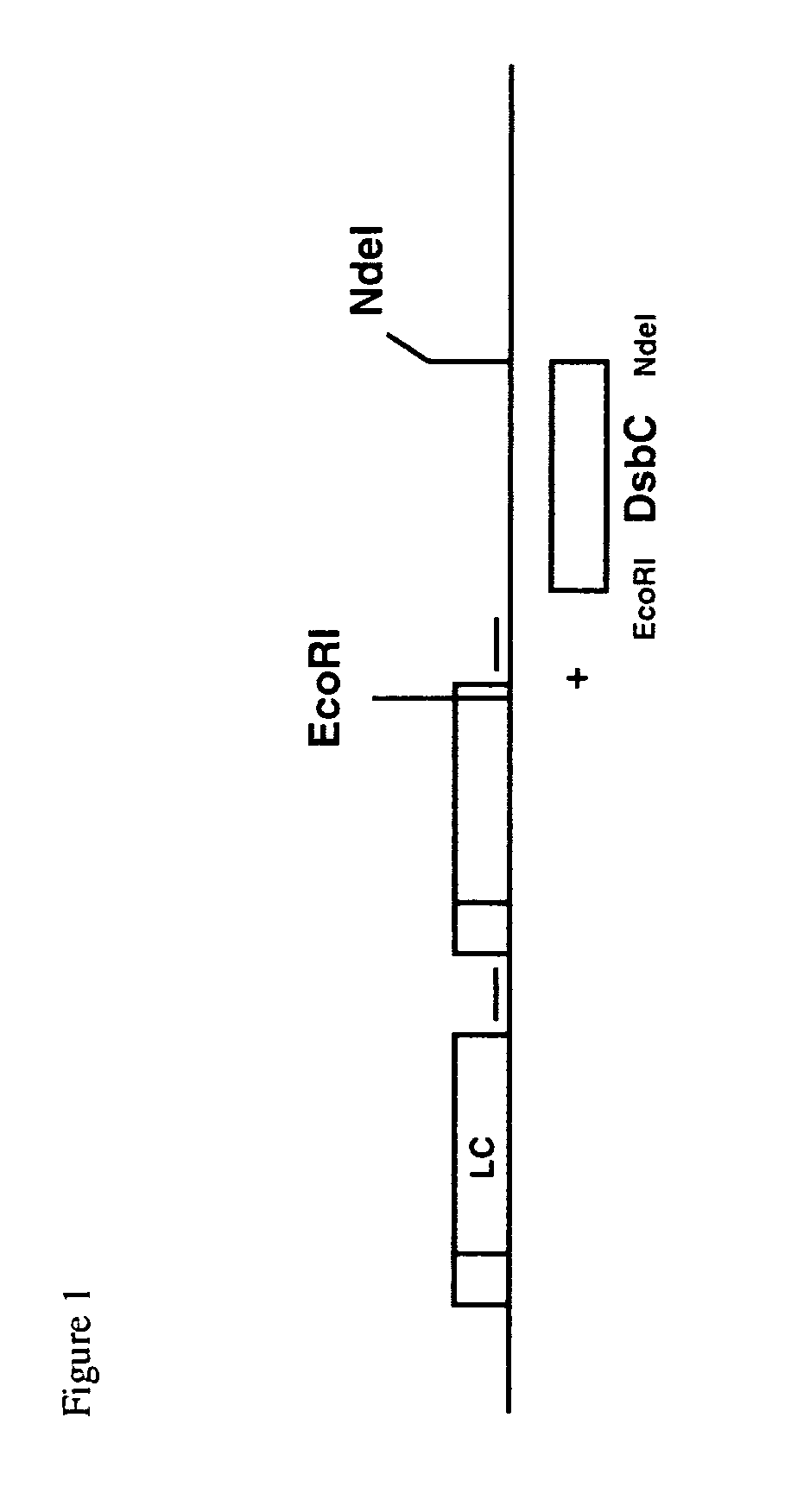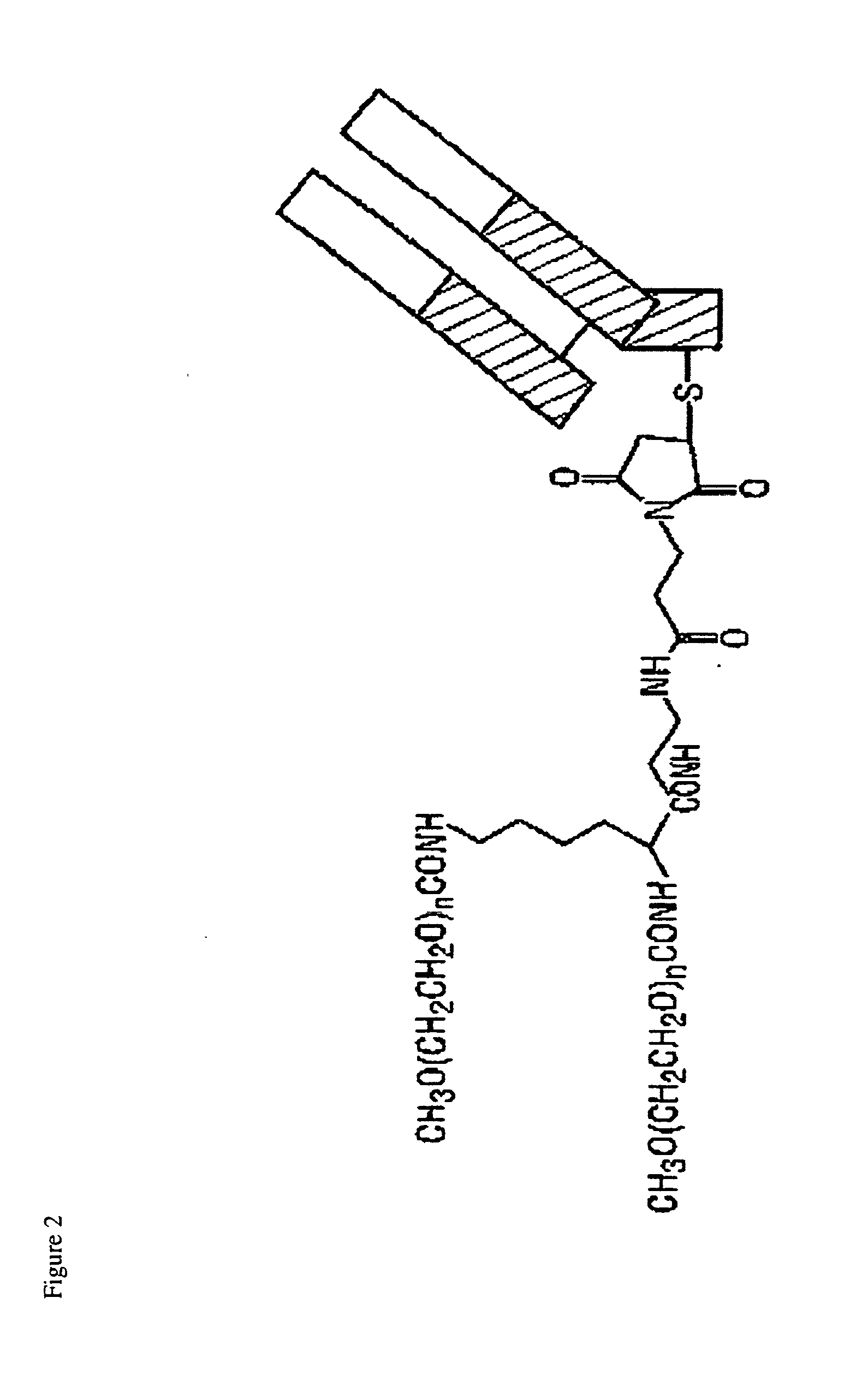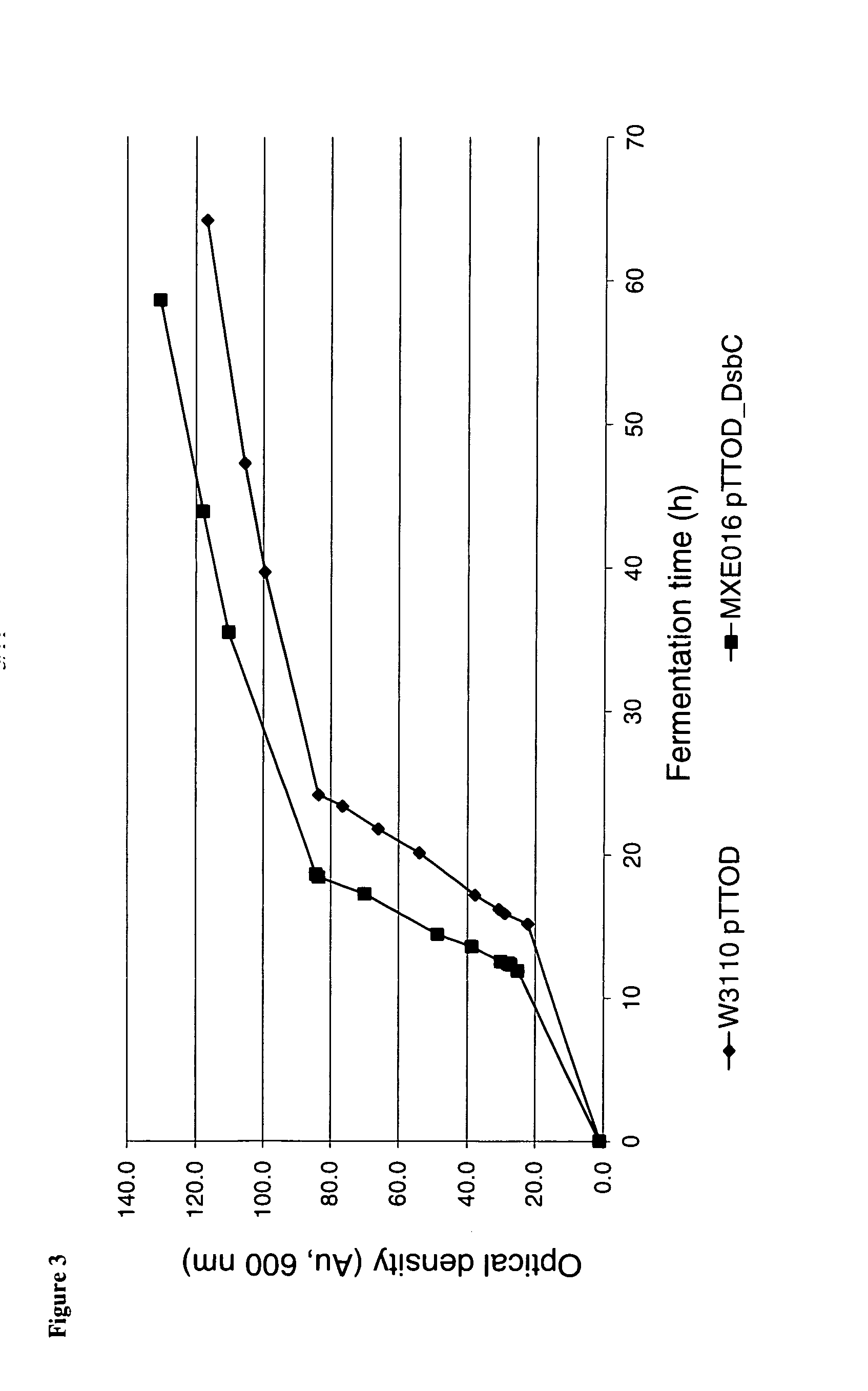Bacterial host strain expressing recombinant dsbc
a host strain and recombinant technology, applied in the field of bacterial host strains expressing recombinant dsbc, can solve the problems of poor cell health phenotype and still significant limitations
- Summary
- Abstract
- Description
- Claims
- Application Information
AI Technical Summary
Benefits of technology
Problems solved by technology
Method used
Image
Examples
example 1
Generation of Cell Line Carrying Mutated Tsp Gene MXE001 (ΔTsp)
The MXE001 Strain was Generated as Follows:
[0313]The Tsp cassette was moved as Sal I, Not I restriction fragments into similarly restricted pKO3 plasmids. The pKO3 plasmid uses the temperature sensitive mutant of the pSC101 origin of replication (RepA) along with a chloramphenicol marker to force and select for chromosomal integration events. The sacB gene which encodes for levansucrase is lethal to E. coli grown on sucrose and hence (along with the chloramphenicol marker and pSC101 origin) is used to force and select for de-integration and plasmid curing events. This methodology had been described previously (Hamilton et al. 4617-22; Blomfield et al. 1447-57). The pKO3 system removes all selective markers from the host genome except for the inserted gene.
The Following Plasmids were Constructed:
[0314]pMXE191 comprising the knockout mutated Tsp gene as shown in the SEQ ID NO: 28 comprising EcoR I and Ase I restriction mar...
example 2
Generation of Cell Lines Carrying Mutated Spr Gene and Cell Lines Carrying a Mutated Tsp Gene and a Mutated Spr Gene
[0337]The spr mutations were generated and selected for using a complementation assay.
[0338]The spr gene (SEQ ID NO: 23) was mutated using the Clontech® random mutagenisis diversity PCR kit which introduced 1 to 2 mutations per 1000 bp. The mutated spr PCR DNA was cloned into an inducible expression vector [pTTO CDP870] which expresses CDP870 Fab′ (as described in WO 01 / 94585) along with the spr mutant. This ligation was then electro-transformed into an E. coli strain comprising a deletion variant of Tsp (LTsp) (designed MXE001) prepared using the method found in Miller et al. (Miller and Nickoloff 105-13). The following protocol was used, 40 μl of electro competent MXE001, 2.5 μl of the ligation (100 pg of DNA) was added to a 0.2 cm electroporation cuvette, electro-transformation was performed using as BioRad® Genepulser Xcell® with the following conditions, 2500 V, 2...
example 3
Generation of Plasmid for Anti-CD154 Fab′ and DsbC Expression
[0356]A plasmid was constructed containing both the heavy and light chain sequences of an anti-CD154 Fab (SEQ ID NOs: 13 and 11, respectively) and the sequence encoding DsbC (SEQ ID NO: 27).
[0357]Plasmid pMXE351 (pTTOD_DsbC), an expression vector for the anti-CD154 Fab and
[0358]DsbC (a periplasmic polypeptide), was constructed using conventional restriction cloning methodologies. The plasmid pMXE351 contained the following features; a strong tac promoter and lac operator sequence. As shown in FIG. 1, the plasmid contained a unique EcoRI restriction site after the coding region of the Fab′ heavy chain, followed by a non-coding sequence and then a unique NdeI restriction site. The DsbC gene was PCR cloned using W3110 crude chromosomal DNA as a template. An EcoRI site was removed from the wild type DsbC sequence by PCR overlap extension such that the PCR product encoded for a 5′ EcoRI site followed by a strong ribosome bindin...
PUM
| Property | Measurement | Unit |
|---|---|---|
| Mass | aaaaa | aaaaa |
| Molecular weight | aaaaa | aaaaa |
Abstract
Description
Claims
Application Information
 Login to View More
Login to View More - R&D
- Intellectual Property
- Life Sciences
- Materials
- Tech Scout
- Unparalleled Data Quality
- Higher Quality Content
- 60% Fewer Hallucinations
Browse by: Latest US Patents, China's latest patents, Technical Efficacy Thesaurus, Application Domain, Technology Topic, Popular Technical Reports.
© 2025 PatSnap. All rights reserved.Legal|Privacy policy|Modern Slavery Act Transparency Statement|Sitemap|About US| Contact US: help@patsnap.com



